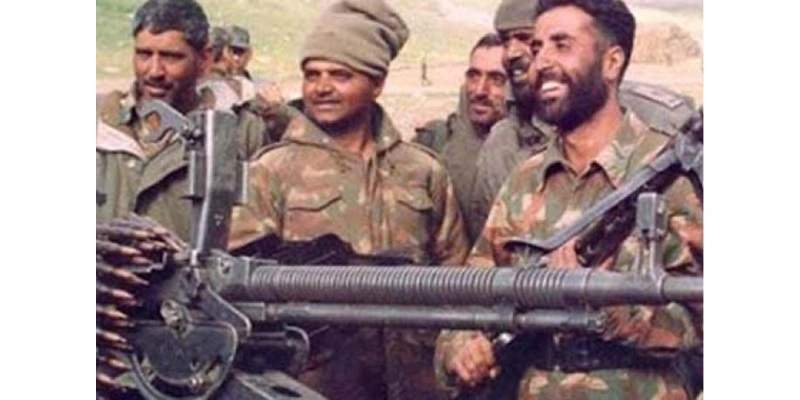Introduction
The Kargil War fought between India and Pakistan in 1999 was a landmark conflict that had significant ramifications on the region’s geopolitical landscape. It was an intense military confrontation that occurred in the Kargil district of Jammu and Kashmir. This article delves into the intricacies of the Kargil War, its historical context, key events, and its impact on both countries and the world at large.

Historical Context
The roots of the Kargil War can be traced back to the partition of British India in 1947, which resulted in the creation of two independent nations: India and Pakistan. Since then, the two countries have been grappling with territorial disputes, particularly over Jammu and Kashmir.
The Kargil district, situated in the northern part of the Indian state of Jammu and Kashmir, holds immense strategic importance due to its proximity to the Line of Control (LoC), the de facto border between India and Pakistan.
Also read: https://topicsxpress.com/article-370-critical-analysis-of-its-evolution-and-removal/
Causes of the Kargil War
The Kargil War was primarily triggered by the infiltration of Pakistani troops into the Kargil Heights. These intrusions were carried out stealthily, catching the Indian forces by surprise as both countries’ forces used to vacate the high altitude post during winter. The motive behind Pakistan’s actions ( According to then Pakistan martial law administrator-General Pervez Mushraf ) was to internationalize the long-standing Kashmir issue and pressure India to resolve it.

Also Read: https://topicsxpress.com/al-aqsa-mosque/
Key Events of the War
Infiltration and Occupation
In early 1999, Pakistani forces, disguised as insurgents, crossed the LoC and occupied key vantage points in the Kargil region. The heights they captured gave them a strategic advantage, making it difficult for Indian forces to dislodge them.
India’s Response
1. Military Action
Under the leadership of the Indian Army, the ground forces launched a well-coordinated offensive, “Operation Vijay,” against the infiltrators. The troops displayed remarkable courage and determination as they engaged in intense combat in the treacherous terrain of Kargil. The enemy forces had taken advantage of the rugged mountainous terrain, making the task of the Indian soldiers even more challenging.
2. Strategic Use of Artillery
Indian artillery units were strategically deployed to shell enemy positions and disrupt their movements. The accurate and timely use of artillery helped neutralize several enemy strongholds and provided cover for advancing Indian troops.

3. Air Support
The Indian Air Force (IAF) supported the ground forces during the conflict. The IAF utilized its fighter jets, attack helicopters, and reconnaissance aircraft to provide air cover and strike enemy positions with precision-guided munitions. This was a significant setback for Pakistan’s military commanders as they thought India would never use its Airforce.
4. Intelligence Gathering
Indian intelligence agencies played a crucial role in gathering information about enemy positions and movements. Timely and accurate intelligence allowed the Indian forces to plan their operations effectively and minimize casualties.
5. Diplomatic Efforts
Alongside the military action, India also engaged in diplomatic efforts to garner international support and isolate Pakistan on the global stage. The Indian government presented irrefutable evidence (Recording of General Pervez Musharraf with his Generals talking about war ) of Pakistan’s involvement in the conflict, garnering condemnation from the international community.
Also Read: https://topicsxpress.com/chandrayaan-3/
International Involvement
The Kargil War garnered significant attention from the international community. The United States, among other nations, urged Pakistan to withdraw its forces from the region. This diplomatic pressure further isolated Pakistan on the global stage.

Ceasefire and Aftermath
PM Atal Bihari Vajpayee declared Operation Vijay successful on 14 July 1999. On 26 July 1999, the conflict ended, with both nations agreeing to a ceasefire. Pakistan’s attempt to internationalize the Kashmir issue had failed, and the Kargil War left a lasting impact on India-Pakistan relations. The Kargil Review Committee (KRC) was set up to examine the sequence of events and make recommendations for the future by the Government of India on 29 July 1999. “Kargil Review Committee” highlighted the need for modernization and the development of infrastructure in border areas and the creation of the “Chief Of Defence Staff (CDS). The CDS post was created in December 2019.

Also Read: https://topicsxpress.com/the-creation-of-the-state-of-israel/
Conclusion
The Kargil War remains etched in the memory of both India and Pakistan as a defining moment in their respective histories. It showcased the bravery of Indian soldiers and the determination of the nation to protect its territorial integrity. At the same time, it highlighted the need for peaceful resolutions to long-standing conflicts between the two countries.
The Kargil War also serves as a reminder of the human cost of war and the importance of seeking diplomatic solutions to resolve disputes. As India and Pakistan continue to navigate their complex relationship, the lessons learned from the Kargil War continue to shape their actions and policies.
Frequently Asked Questions
Who won Kargil War?
India won the Kargil War.
Kargil War Date?
India Airforce had launched strikes on intruders outpost on 26th May but “Operation Vijay” was launched on 6th june 1999 and was declared successful on 14th july 1999 by the PM Atal Bihari Vajpayee. Conflict ends on 26th july.
Kargil War Heroes ?
1. Grenedier Yogendra Singh Yadav
2. Lt. Manoj Kumar Pandey
3. Cap. Vikram Batra
Kargil War Casualties ?
Indias’ official casualty figures is 527 dead and 1,363 wounded and Pakistans’ is 453.




